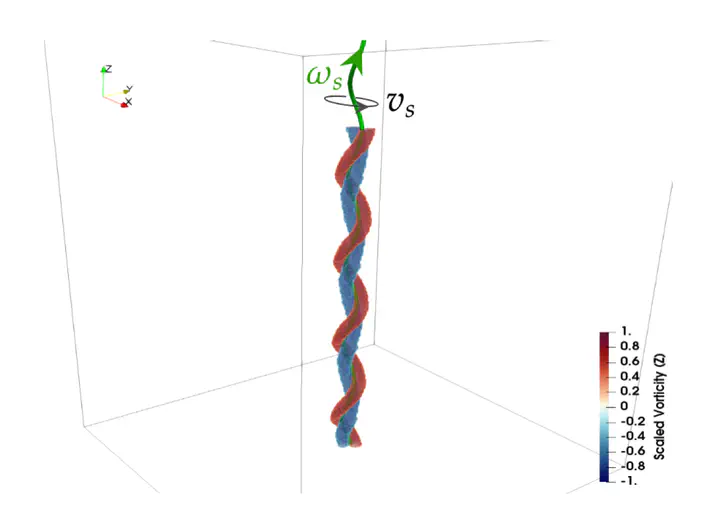 Superfluid vortex (green) and normal fluid vorticity
Superfluid vortex (green) and normal fluid vorticity
Abstract
The reciprocal energy and enstrophy transfers between normal fluid and superfluid components dictate the overall dynamics of superfluid 4He including the generation, evolution and coupling of coherent structures, the distribution of energy among lengthscales, and the decay of turbulence. To better understand the essential ingredients of this interaction, we employ a numerical two-way model which self-consistently accounts for the back-reaction of the superfluid vortex lines onto the normal fluid. Here we focus on a prototypical laminar (non-turbulent) vortex configuration which is simple enough to clearly relate the geometry of the vortex line to energy injection and dissipation to/from the normal fluid: a Kelvin wave excitation on two vortex anti-vortex pairs evolving in (a) an initially quiescent normal fluid, and (b) an imposed counterflow. In (a), the superfluid injects energy and vorticity in the normal fluid. In (b), the superfluid gains energy from the normal fluid via the Donnelly-Glaberson instability.